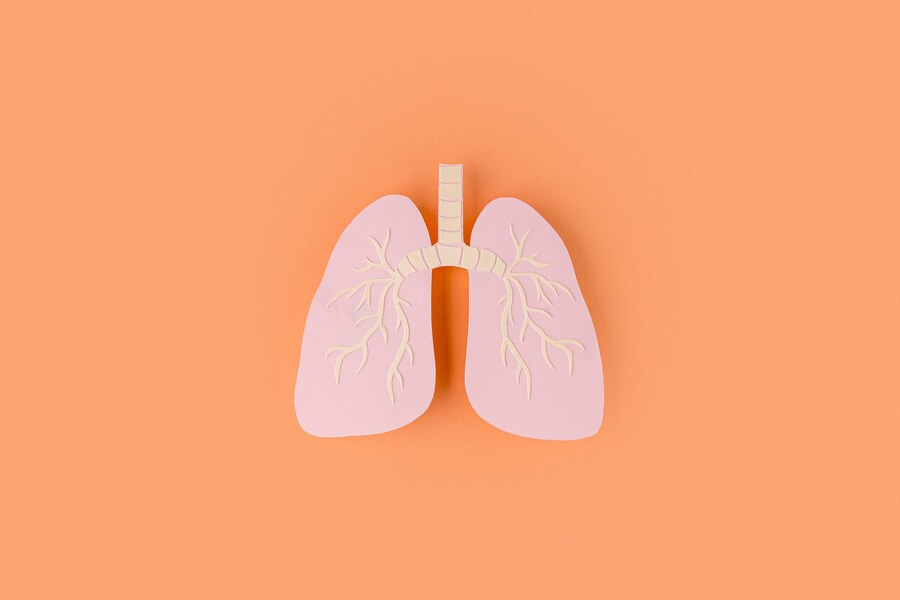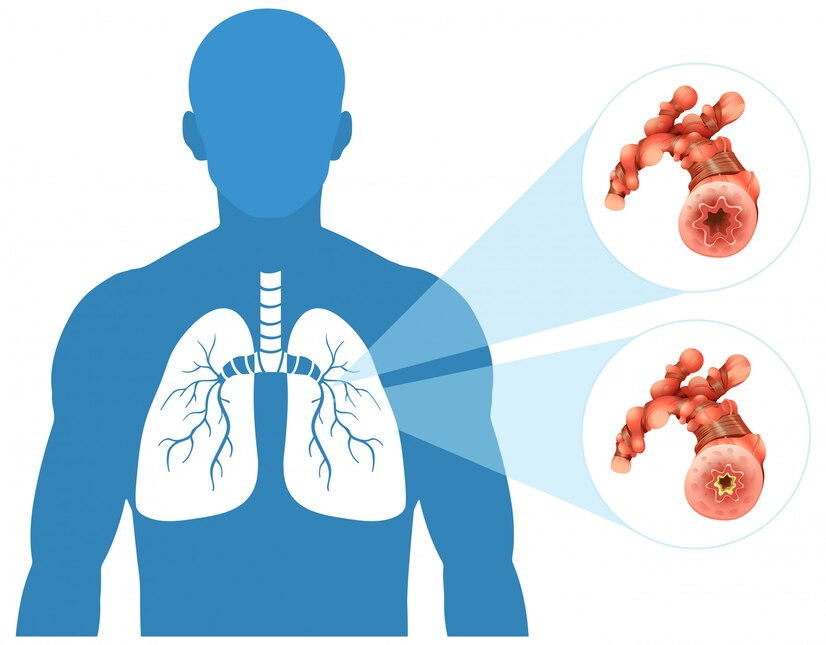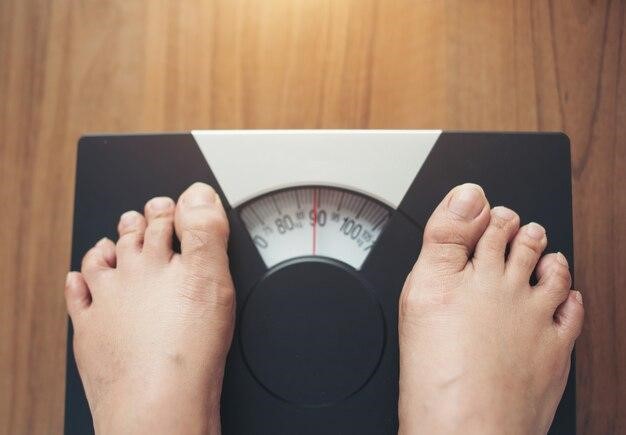Contents
- 1 Exercising your breathing
- 2 Diaphragmatic breathing
- 3 Pursed-lipped breathing
- 4 Breathing exercises with activity
- 5 Make use of relaxation techniques.
- 6 Muscles are gradually relaxed:
- 7 Meditation:
- 8 Guided imagery:
- 9 It’s crucial to be at ease.
- 10 Make use of medical assistance.
- 11 Is there a way to prevent lung cancer-related shortness of breath?
- 12 What causes shortness of breath in people with lung cancer?
- 13 A variety of factors can cause shortness of breath.
- 14 When should you go to the doctor?
How to Deal with Shortness of Breath When You Have Lung Cancer – Dr. Sandeep Nayak: In both men and women, lung cancer is the second most common type of cancer.
People with lung cancer frequently experience shortness of breath. It affects roughly 15% of people with early-stage cancer and up to 90% of people with advanced cancer.
According to Dr. Sandeep Nayak, Bangalore’s excellent oncologist, some people may experience intermittent shortness of breath on their activity level or emotional state.
On the other hand, shortness of breath can strike suddenly and be highly distressing.
There are a few things you can do if you have lung cancer to help you cope with shortness of breath when it occurs. Continue reading to find out more.
Exercising your breathing
To get enough air when you’re short of breath, try breathing in more quickly and shallowly from the top of your lungs and chest.
However, this style of breathing depletes energy and can cause fatigue.
Using some of the breathing exercises listed below to help counteract this urge can be beneficial.
“If you’re experiencing shortness of breath, your doctor or care team may recommend additional breathing exercises. If that’s the case, make sure to follow their instructions to the letter,” says Dr. Sandeep Nayak, Bengalore’s expert oncologist.
Platforms such as Practo and Clinicspots list Dr. Sandeep Nayak among the top surgical oncologists in India.
Diaphragmatic breathing
Diaphragmatic breathing focuses on breathing deeply from the lower part of your lungs, allowing you to control your breathing better. To do so, follow these steps:
- Sit down and make sure your back is supported and your shoulders are relaxed.
- Place your hand just above your belly button on your stomach.
- Breathe slowly and deeply through your nose. As you take in air, you should feel your stomach expand.
- Slowly exhale through your mouth. As you exhale, your stomach should move back inward. Exhaling should take about twice as long as inhaling.
- Repeat this exercise until your breathing is normal again. Pay close attention to your breaths and how your stomach moves in and out each time.
Pursed-lipped breathing
When shortness of breath strikes suddenly and unexpectedly, to do pursed-lipped breathing, follow the steps below:
- Inhale slowly and deeply through your nose.
- As if you’re about to whistle or blow out a candle, purse your lips. Then slowly exhale through your mouth.
- Aim to exhale for longer than you inhale, similar to diaphragmatic breathing. Attempt to expel as much air as possible from your lungs.
- Rep to this exercise until your breathing is normal again.
Breathing exercises with activity
You can use additional breathing exercises to help manage shortness of breath when you’re active.
Blow-as-you-go and paced breathing are two of them. Both can be used in conjunction with pursed-lip breathing.
Blow-as-you-go is a breathing technique that can be used before any activity that requires effort and may cause shortness of breath, such as standing up.
You would inhale before standing up in this situation. Then, as you move into a standing position, you’d exhale.
When walking or going upstairs, pace breathing can help you keep track of your breaths. You can change the pattern to suit your preferences. You could, for example, breathe in for one step and out for two.
Make use of relaxation techniques.
Shortness of breath can be both distressing and frightening at times. This can make you feel more anxious, exacerbating your shortness of breath.
Relaxation techniques can assist you in remaining calm while your breathing returns to normal.
Breathing exercises are examples of relaxation techniques that we’ve already discussed.
When you’re short of breath, you might want to try the following relaxation techniques:
Muscles are gradually relaxed:
The process of progressive muscle relaxation entails systematically tensing and releasing muscle groups. You usually begin with the muscles in your feet and work your way up.
Meditation:
Meditation comes in a variety of forms. All types of meditation have one thing in common: they sharpen your focus and direct your thoughts in specific directions.
Guided imagery:
Guided imagery is a relaxation technique that involves visualizing calming images in your mind to help you relax.
The techniques listed above aren’t the only ones to help you relax.
Doing something else can sometimes help you relax and take your mind off your shortness of breath.
Some examples of things to do are:
- watching some TV
- putting on calming music
- listening to a podcast
- reading a book or a magazine
It’s crucial to be at ease.
“When attempting to manage shortness of breath, make sure you’re in a comfortable environment and take steps to eliminate factors that can make breathing difficult,” says Dr. Sandeep Nayak, Bengalore’s outstanding oncologist.
Some things that you can do include:
- stopping what you’re doing and sitting down
- trying to sit up straight, as this helps to keep airways open
- loosening or removing clothing that may be restrictive to breathing
- moving to an area that’s a more moderate temperature, as temperature extremes can make breathing harder
- using a handheld fan to blow cool air into your face
Make use of medical assistance.
To help you breathe, your doctor may have prescribed medications or treatments. Stop what you’re doing and use them as directed by your doctor if you experience shortness of breath.
Bronchodilators: These are medications that help you breathe easier. They’re delivered through an inhaler or nebulizer, and they’re helpful if you have a condition like COPD or asthma that causes airway constriction. A few examples of medications or treatments that could be used include:
Anxiety medications: If you have high anxiety levels due to shortness of breath, your doctor may prescribe benzodiazepines or other anti-anxiety medications (Xanax, Valium, others).
Oxygen: Oxygen is usually used when you have low oxygen levels in your blood, known as hypoxemia. This entails inhaling oxygen through a facemask or a tube that attaches to your nose.
If you don’t currently use any medical interventions for breathing but find yourself short of breath frequently, talk to your doctor or care team about what you can do.
It’s impossible to avoid all cases of shortness of breath.
However, there are some things you can do to help reduce your chances of developing shortness of breath:
- Gather everything you’ll need in one place before you start doing household chores.
- If possible, consolidate necessities on one level to reduce the number of trips up and down.
- Sit down while performing daily tasks such as showering, folding laundry, or cooking.
- Use a rolling cart to help you move groceries, dishes, or laundry around your house.
- Don’t put too much pressure on yourself. Pace yourself and take breaks as needed.
- Take steps to quit smoking if you are a smoker.
- Consult a physical therapist or an occupational therapist. A physical therapist can teach exercises to help manage shortness of breath. With the help of an occupational therapist, you can develop strategies to make daily tasks easier.
- If necessary, seek help from family and friends. Tell them how they can assist you.
What causes shortness of breath in people with lung cancer?
To understand how lung cancer causes shortness of breath, you must first understand how your lungs function.
Your lungs deliver fresh oxygen to your body while also removing carbon dioxide, a waste gas.
Air moves into tiny air sacs called alveoli when you breathe in, where oxygen passes into the surrounding blood vessels.
This oxygen-rich blood returns to the heart, where it is pumped to all of your body’s organs and tissues.
At the same time that oxygen is being absorbed into the bloodstream, carbon dioxide is being expelled. When you breathe out, the carbon dioxide that has entered your alveoli is removed from your body.
When something gets in the way of this process, it can be difficult for your lungs to provide enough oxygen for your body to function normally. This can cause dyspnea or shortness of breath.
Shortness of breath is frequently caused by a condition in which the airways have become constricted or blocked in some way in lung cancer patients. Other factors, such as poor pulmonary blood flow, anemia, or anxiety, can also play a role.
A variety of factors can cause shortness of breath.
Some of the potential causes of shortness of breath in people with lung cancer include:
- tumors that are in or close to your lungs
- side effects from your cancer treatments, like those caused by:
- surgery
- chemotherapy
- radiation therapy
- lung cancer complications, like:
- pneumonia, an infection that impacts the lungs
- fluid in your lungs (pleural effusion)
- anemia, when red blood cell levels are lower than normal
- a blood clot that’s traveled to your lungs (pulmonary embolism)
- other coexisting lung conditions like:
- chronic obstructive pulmonary disease (COPD)
- asthma
- interstitial lung disease
- other health conditions, like:
- obesity
- congestive heart failure
- anxiety
When should you go to the doctor?
While the strategies listed above can help you cope with mild shortness of breath at home, call your doctor if:
- You have a fever, with or without chills.
- You’re coughing up green or yellow mucus that may or may not contain blood.
- Your current strategies for reducing shortness of breath aren’t helping you get back to normal breathing.
Some signs and symptoms may indicate a medical emergency. If you have any following symptoms, go to the emergency room right away:
- difficulty breathing
- chest pain
- trouble speaking
- dizziness or fainting
- skin, lips, or fingernails that have become pale or blue
- confusion
Takeaway
Shortness of breath can be caused by lung cancer for various reasons.
These can include but are not limited to lung tumors, treatment-related side effects, and lung cancer complications.
There are several things you can do to help manage shortness of breath when it occurs.
“Examples are breathing exercises, finding ways to relax, and medical interventions to help with breathing,” says Dr. Sandeep Nayak, whose among the best oncologist in Bangalore
Shortness of breath can indicate a more severe problem in some cases. If you’re having trouble breathing, chest pain, or dizziness, go to the emergency room right away.







